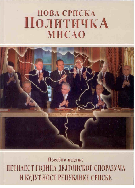| NSPM in English | |||
A Bosnian Crime, Or Disinformation, Atlas? |
 |
 |
 |
| petak, 27. novembar 2009. | |||||||||||||||
|
First of all, an important qualification is in order. Mr. Tokača’s Atlas covers all of Bosnia and Herzegovina. We neither have the resources to verify his results on such a broad scale, nor is that the scope of our research activity. We are dealing with the Srebrenica region only, and we can responsibly enter a debate only in relation to events which took place there during the war in BH, between 1992 and 1995. The electronic version of Mirsad Tokača’s Atlas is divided into three segments: (1) destruction of religious facilities; (2) locations, which refers to the areas in which the crimes were committed; and (3) incidents, which means specific examples of the crimes which were perpetrated, including a brief description and a list of victims. We shall now proceed to critically examine each of these three segments of the Atlas, while making it clear that our focus will primarily be possible errors in relation to the Srebrenica region, and only incidentally BH as a whole. [1] Religious facilities. Facilities in this category are presented in the Atlas on a separate internet page.[3] If we may be allowed to step outside the self-imposed geographical framework (Srebrenica) and to cast a glance at BH as a whole, we shall notice here a very odd sight. The computer screen will literally turn green with little squares with the star and half moon on them, while behind them, skillfully concealed, lie twenty-six red squares with a cross (symbols of damaged Orthodox religious facilities) and several dozen blue ones, marking Catholic religious facilities which had suffered the same fate. If now, with the aid of the cursor, we were to go over to the portion of the map where the region of Srebrenica is located, it turns out that green squares are practically the only ones there. Only two are of the other colors. The latter are actually quite difficult to notice and even harder to click on because on Mr. Tokača’s map the green squares cover them over and make them practically imperceptible. The resulting impression is unambiguous and it is powerful: in Bosnia and Herzegovina as a whole during the war it was almost exclusively Moslem religious facilities which suffered damage, while in the politically extraordinarily sensitive Srebrenica region, with minor exceptions, exclusively so.[4] Does this picture bear any relation to reality, and if so, how much? It would appear not to. Before us is a monograph by the late Professor Slobodan Mileusnić, “Spiritual genocide, 1991—1995” (1997).[5] On p. 9 of this richly documented study, which certainly ought to be on Mirsad Tokača’s bookshelf, we find the following information: “Serbian holy places and other historical monuments located on territories under the control of Croatian and Moslem forces are inaccessible and their fate is unknown, so that the total of 212 destroyed and 367 damaged churches is still incomplete.” Prof. Mileusnić carefully includes pictures of damaged and destroyed Orthodox religious facilities in Bosnia and Herzegovina that he is writing about, accompanied by a brief description of the damage, which is very similar to the approach used by Tokača in his Atlas. If, as we saw in footnote 4, broken windows qualify the mosque in Banovići Selo to be noted in this Atlas, what justification does Mr. Tokača have to mention just slightly more than two dozen of the 579 damaged and destroyed Orthodox religious places in Bosnia and Herzegovina which Prof. Mileusnić has duly recorded? This item alone is sufficient to raise serious doubts that in Mr. Tokača’s Atlas, at least in this section of it, something may be drastically amiss. Let us now focus on the region of Srebrenica, where the picture that Tokača presents raises a great many more doubts and questions, not only in regard to this but—as will soon be evident—the remaining two categories as well. For Srebrenica town, only one Orthodox religious place is mentioned, and that is the town cathedral concerning which it is said laconically that “it was partially damaged, and then renovated after the war.”[6] Of Catholic holy places, only the „Bosna Srebrena“ chapel is mentioned, of which it is said that „it was partially damaged during the war, renovated in 2002.“ Is that really all that could be said about the damage that was done to Orthodox holy places in the region of Srebrenica during the conflict between 1992 and 1995? Not if we consult the research of Prof. Mileusnić. First of all, he notes not one but four destroyed and burned Orthodox religious structures in the town of Srebrenica, which is three more than Mr. Tokača was able to find. Then, he lists 17 for Srebrenica region: Drinjača, Kravice, Potpeć, Sase, Fakovići, Visočnik, Pribojevac, Žlijebac, Krnići, Erići, and Karna.[7] It seems that mathematics is none too kind to Mirsad Tokača’s credibility: in the region, it turns out, there are 17 unmentioned churches, plus the 4 in the urban area of Srebrenica, making for a total of 21. Twenty-one, if we are not mistaken, is 21 times more than 1, which is the maximum that Mr. Tokača is prepared to concede to the Orthodox community as the extent of the damage that its religious facilities had suffered in the region of Srebrenica. Prof. Mileusnić’s list should, however, be expanded to include the Orthodox church in Skelani which, during an attack by Moslem forces, fared far worse than the Banovići Selo mosque, with its broken windows, which nevertheless was enough for that mosque to be included in Mr. Tokača’s annals. But now, to all these missed opportunities to state the facts we must also add a puzzle. Readers will have to believe us (if they do not, they may go on location and check it out for themselves) that there is a destroyed mosque that the pedantic Mr. Tokača oddly neglected to mention. The location of that mosque’s ruins may give us a clue for this unusual failure. That mosque is located in Sase, a community about 12 km. from Srebrenica. Literally 20 meters from the mosque, which was destroyed by Serbs, there is the Serbian Orthodox monastery of the Holy Trinity. Moslem forces heavily damaged the monastery, and torched the monks’ quarters, during combat which took place in the area in 1992-1993.[8] The ignored mosque in Sase fared incomparably worse that the one in Banovići Selo, with its broken windows: it was razed to the ground. Did that not merit being noted in a scholarly presentation of this caliber? We assume that, in relation to the politically crucial Srebrenica region, any suggestion of symmetry would be anathema to Mr. Tokača and his “independent…professional, non-government, and unbiased institution.”[9] Something tells us that might have been the reason Mr. Tokača managed to get over the destroyed mosque: just so that he would not be obligated to mention the heavily damaged monastery located just a few steps away. But this story is not just about the suffering of two religious places and about the hypocritical, politically motivated, coverup of that double crime. There is more to it than that. In happier and more normal times, these two temples which stood side by side and where neighbors prayed in different ways to the same God, were linked in a wondrous way. It so happens that local Moslems made donations to the monastery for the building of its living quarters, while members of the Orthodox community contributed to the building of the mosque. That is why the politically inspired avoidance of the fate of these two temples in Mr. Tokača’s Atlas is not just a mistake, but something much more serious than that—it is a huge shame. (2) Locations In relation to the very significant issue of Srebrenica victims, in the segment which depicts Locations, the RDC Atlas offers the following information:
To be quite clear: when we click on Srebrenica on the RDC Locations site, there appears a window with a long list of victims by name. There is no ethnic breakdown as such, or we were unable to find it. But regardless, names are most often sufficient to make the distinction and we counted the Serbs, Croats, and Bosniaks (Moslems) on that list and came up with the results shown above. It is not said explicitly, but in the way the data are presented it is implied that the total figure of 7364 represents the number of victims during the entire period of the war, from 1992 to 1995. Once everything is broken down by category, the first thing that strikes the eye is the determination of the authors of this Atlas to make sure that the final figure for the politically crucial region of Srebrenica approximate as closely as possible the magic number of 8000 victims. To that end, and to bolster the total, even Serbian war victims are enlisted, over 400 of them who are acknowledged as such by the Atlas, as well as the considerable figure of Moslems of whom it is said that they are “missing,” over 2600 of them. (Nobody has so far bothered to explain how someone can be charged with “genocide” in relation to disappeared persons, but that is another topic.) As the case may be, the category of “Murdered Bosniaks (Moslems)” numbers about 4200, according to the records of RDC and Mr. Tokača. That is but half way to the magic number, and even that figure—assuming it is reliable—to be useful needs to be broken down into prisoners of war who were actually executed in July of 1995, those who were killed in combat during 28th Division’s breakthrough toward Tuzla after Serbian forces captured Srebrenica on July 11, as well as persons who were killed in various other ways and times, including those who died of natural causes, in the period from the beginning of the conflict to July 11, 1995. So it turns out that, if we pose but a handful of critical questions, we see that even the figure of 4200 murdered Moslems is not what at first glance it appears to be, and that the general figure of “7364 victims” is not that as a matter of certainty. Quite the contrary, for a project with scholarly pretensions, that general figure is unforgivably misleading. That should be ample cause to challenge the entire construct, insofar as it purports to deal with Srebrenica. However, dilemmas only increase if we compare the above data, made officially public on November 4, 2009, with information pertaining to the region of Srebrenica which is to be found in a separate entry on the RDC website, entitled “Srebrenica—a place of suffering.” [10] To make those statistics more readable, we present them here with the number of the graph where they may be found: Srebrenica: murdered and disappeared, 92—95 (Graph 3) 1992: 1224 1993: 606 1994: 53 1995: 6975 Unknown: 87 Total: 8945
Srebrenica: murdered and disappeared, 92—95 (Graph 4) 77,98% Srebrenica victims date from 1995
Srebrenica: murdered and disappeared, 92—95 (Graph 8) Victims in July 1995: 6886
Srebrenica: murdered and disappeared by ethnicity (Graph 13) Bosniaks (Moslems): 8460 Serbs: 480
Srebrenica: murdered and disappeared by status and ethnicity (Graph 15) Serbian civilians: 151 Serbian soldiers: 329 Clearly, these figures are uncoordinated with the Atlas data. Let us note just Graph 3, entitled “Murdered and disappeared, 92—95.” RDC has been circulating this, and other graphs in the same presentation, for over a year. In that (perhaps interim) version of his Srebrenica data, Mr. Tokača shows that, according to the information at his disposal a year or more ago, there were about 9000, or, to be precise, 8945 victims. According to the calculations presented in the Atlas, that figure as it stands today has dropped to 7350. Thus, about 1600 victims have simply vanished in some inexplicable way. This apparent “fixing” of the data had as its consequences that the total of victims—according to Mr. Tokača’s position now—has fallen below the magic figure of 8000, although not by much. Are there serious scholarly reasons for this correction in the data? Or, was that done for practical reasons, to jettison utterly unsustainable claims in order to build up credibility for insisting on the preservation of the core of the official Srebrenica narrative? We do not have a reliable answer to that question. In any event, it is interesting that according to the graphs which were circulated over a year ago it would appear that between 1992 and 1994 about 2000 people had lost their lives in the region of Srebrenica. That opens up some fascinating issues: where and how are those individuals recorded, where were they buried after their deaths and what measures have been taken to ensure that they would not end up at the Potočari Memorial center, where they would be untruthfully presented as victims of genocide from July of 1995? Deviations of a few dozen, or even hundreds, can be tolerated if they are within reason. But there is something else here that stares one in the face as we carefully and critically examine how these data are laid out. That is the consistent reliance on the fairly large category of “disappeared” to stuff the total of presumed victims and thus raise their number to the desired statistical level. That would still be true even if we assumed that everyone from the “murdered” category could be classed as a victim of the execution of war prisoners in July of 1995, whether we considered it a massacre or genocide. It would be useful to clarify the concept of “disappeared” as it is generally used in these situations. It simply means the following. At a certain moment, most likely soon after the takeover of the Srebrenica enclave in July of 1995, a relative or some other person called to inform the International Red Cross, or some other analogous organizations, that as far as the declarant was aware, at the time of reporting, the individual in question was missing. There were several such, rather lengthy, lists of missing people in circulation at the time. Those lists were notorious for frequently duplicated data involving the same individual because of multiple sources, which is quite natural given the chaos and confusion at the time. But the point to bear in mind is that the job of the organization which received the missing person report was only to make a note of it, not to conduct an investigation to ascertain the status or the ultimate fate of the individual reported to be missing. These lists were undoubtedly of great help initially, but they cannot serve as a source of reliable data about a person’s ultimate fate. Deleting duplicate reports was a sufficiently thankless, and never quite completed job, of the various commissions which were subsequently looking into these matters. Ascertaining the final status of the “missing person,” and whether that individual ever surfaced somewhere else after the end of the war, is a task that nobody ever even attempted to systematically perform. That is the reason why, in this particular context, relying on the “disappeared,” or “missing,” as a meaningful category in terms of who was executed can only serve to obfuscate, not to clarify, the facts. It is, therefore, a category that we should regard with the most extreme skepticism. When we put aside the “disappeared,” and when from the figure of 4256 “murdered” Bosniaks we deduct at least the 2000 that the ICTY Prosecution military expert Richard Butler said could be the number of those killed in combat during the retreat of the 28th Division column from Srebrenica to Tuzla, we obtain a figure of 2500 which is much more realistic, and closer to the forensic evidence from the mass graves. The results of mass grave exhumations, let us recall, are the only corpus delicti of the Srebrenica crime and they must therefore serve as the point of departure for any factually based discussion on this subject. Like all bold bluffs, this one also stands a chance of succeeding under one condition only—that no one should bother to check it out. We saw that clearly in the case of the forensic evidence put forward by the Hague Tribunal Office of the Prosecutor. It consists of over 30,000 pages of material which seemingly document about 3500 Moslem Srebrenica victims. The Prosecution no doubt hoped that nobody would read or critically examine that material, and that by inertia it would be accepted as reliable and just in the way the Prosecution chose to present and interpret it to the chamber and to the general public. Indeed, as expected, laziness was for a time triumphant and for a number of years the Tribunal’s bluff looked authentic and rather intimidating. But when a forensic specialist on the team of our NGO checked the entire material, from the first page to the last, the picture changed radically and the Hague Prosecution’s construct of forensic “evidence” collapsed unceremoniously, like a house of cards.[11] The same applies to the list of Srebrenica victims in Mr. Tokača’s Atlas. We were not discouraged by the scope of the material and we did not give up on verification. As in the other case, we analyzed everything thoroughly, from start to finish. The result is clear and unambiguous. At least as far as the Srebrenica victims’ list is concerned, we cannot give Mr. Tokača a passing grade. (3) Incidents. In addition to the already enumerated doubts about the integrity of Mr. Tokača’s Atlas, there remains one more and it concerns the category that he calls “incidents.” The examples in the Atlas in this category are again very one-sided, and they are presented in a way that does not befit an “unbiased” organization.[12] First of all, and in order to remove every possibility of terminological misunderstandings, what does the word “incident” mean? We consulted two respectable sources, the Oxford dictionary for the definition in the English language, and the Vujaklija dictionary for the Serbian-Croatian-Bosnian definition. Here is what the Oxford has to say: incident • noun 1 an event or occurrence. 2 a violent event, such as an attack. 3 the occurrence of dangerous or exciting events: the plane landed without incident. – ORIGIN from Latin incidere ‘fall upon, happen to’. According to Vujaklija, first in the original: incident (l. incidens), latinicom: incident And now the relevant part of the definition in English: “an event, occurrence, an unpleasant occurrence; …a secondary event or action; a small-scale conflict.” Both linguistic authorities describe “incident” in general terms as, first of all, an event, then they define it more closely as an unpleasant event (Vujaklija) or an event accompanied by violence (Oxford). Does Mr. Tokača’s Atlas list all unpleasant occurrences and events in the region of Srebrenica during the conflict from 1992 to 1995 that were accompanied by violence? No, it does not. Almost all such incidents where the victims were citizens of Serbian ethnicity are omitted. If that is correct, it is unacceptable. The first and fundamental test of the objectivity of Mr. Tokača’s Atlas in this regard is the question: how many “incidents” does it mention where Serbian villages and hamlets surrounding Srebrenica were attacked and destroyed? The answer is: not a single one. If the attack on a Serbian village, the indiscriminate killing of its inhabitants irrespective of gender or age, the destruction of homes, schools, and other infrastructural facilities, and plunder of property, according to the definitions presented above, does not constitute an “incident,” then what does? An exhaustive list of those villages and hamlets would be very lengthy. We will mention only some that we visited during the last couple of months where we have ascertained personally the thoroughness of their destruction: Ratkovići (wiped off the face of this earth), Zalazje, Obadi, Andrići, Krnići, Medje, Karno, Pribićevac, Bradići, Gaj, Toplica, Brežani, Arapovići, Božići, Klekovići, Brana Bačići, Kravice, Jezero, Mala Turija, Podravanje, Bjelovac, Bukova Glava, and Pribojevići. Our non-government organization has detailed files on the condition of those and many more villages, including pictures which reflect their appearance immediately after attack during the war, and their condition today, a decade and a half later. It will be our pleasure to place those records at the disposal of Mr. Tokača should he be prepared to fill the gaps in his catalogue of war incidents in the area of Srebrenica by including also those incidents in which the victims were Serbs. To conclude. The shortcomings that we have cited seriously undermine the integrity of the Bosnian war crimes Atlas that was prepared by the Research and Documentation Center of Mr. Mirsad Tokača. We have pointed out the systematic ignoring of damage and victims, with a very strong suggestion that it was done based on ethnic affiliation, when the destruction of religious facilities occurred and inhabited areas and their human residents were victimized, if they happened to be Serbian. Mr. Tokača’s depiction of the human toll of the ethnic conflict in the region of Srebrenica between 1992 and 1995 is, to put it charitably, deceptive and inaccurate. Mr. Tokača’s Atlas contains many useful insights and data, but in order to be a scholarly work in the authentic sense of that word it needs to exhibit one more feature: objectivity. The inclusion of some correct data (and Mr. Tokača does provide a considerable amount of it) is not in and of itself a criterion, but only one of the incidental conditions, of scholarship. Where that is done not out of regard for the truth, but as a tactic to promote an agenda in relation to a specific cause that the author happens to be committed to, the work as a whole may then have to forfeit its scholarly credentials. If we were to offer a critical overview of the Bosnian war crimes Atlas, implicitly it is entirely under the shadow of Srebrenica and it is animated by the determined defense of that last bastion of wartime propaganda and key buttress of the Moslem side’s current policy toward the Republic of Srpska. Absolutely everything is subject to discussion and may even be the subject of revision except—Srebrenica. For Srebrenica, the principle of victims of the first and second order is still unconditionally in effect; or, to be more exact, of acknowledged and invisible victims. The acknowledged victims are Moslem, the invisible ones are Serbian. The credo of the Research and Documentation Center, which is conspicuously emblazoned on its internet site, is: Truth today—peace forever. A noble thought. But if the results that we have just reviewed reflect the concept of truth which animates Mr. Tokača, the prospects for eternal peace in Bosnia and Herzegovina are slim indeed. (The author is president of the Dutch NGO, Srebrenica Historical Project. Their website is at: www.srebrenica-project.com) [1] New Serbian Political Thought, 14. October, 2009: www.nspm.rs/istina-i-pomirenje-na-ex-yu-prostorima/bosanski-atlas-zlocina-mirsada-tokace.html [2]http://www.idc.org.ba/index.php?option=com_content&view=category&layout=blog&id=80&Itemid=83&lang=bs [3]http://www.idc.org.ba/index.php?option=com_content&view=article&id=22%3 [4] Mr. Tokača’s criterion is very flexible and broad. He refers, for instance, to the mosque in Banovići Selo, municipality of Banovići, and he reports that „due to military operations, [its] facade and windows were damaged.“ Fair enough. No damage or desecration of any kind may be inflicted on religious temples. However, the same minimal level of tolerance for damage to religious sites should be applied equally to temples of all confessions. [5] Published by the Museum of the Serbian Orthodox Church, Belgrade, 1997. [6] It is correct that the Srebrenica town Orthodox temple had to be renovated after the war, but the reason is that while Srebrenica was an enclave under Moslem control the church was desecrated and turned into a storage deposit. Had Mr. Tokača’s assistants bothered to take a few hundred meters’ stroll down the main street to the Srebrenica Orthodox cemetery, there they would have noticed—next to desecrated headstones—also the heavily damaged cemetery chapel on whose façade and interior the effects of firearms are still clearly visible. With what justification was it omitted from the Atlas? [7] Op. cit., Mileusnić, page. 153. [8] Op. cit., Mileusnić, page. 169. [9] See section, „Dobrodošli na web portal IDC [Welcome to the RDC web portal],“ http://www.idc.org.ba/ [10]http://www.idc.org.ba/index.php?option=com_content&view=section&id=35&Itemid=126&lang=bs [11] See study by Dr. Ljubiša Simić, http://www.srebrenica-project.com/sr/index.php?option=com_content&view=category&layout=blog&id=19&Itemid=17 [12] For the way RDC describes itself, see footnote 9. |
|||||||||||||||
Od istog autora
Ostali članci u rubrici
- Playing With Fire in Ukraine
- Kosovo as a res extra commercium and the alchemy of colonization
- The Balkans XX years after NATO aggression: the case of the Republic of Srpska – past, present and future
- Iz arhive - Remarks Before the Foreign Affairs Committee of the European Parliament
- Dysfunction in the Balkans - Can the Post-Yugoslav Settlement Survive?
- Serbia’s latest would-be savior is a modernizer, a strongman - or both
- Why the Ukraine Crisis Is the West’s Fault
- The Ghosts of World War I Circle over Ukraine
- Nato's action plan in Ukraine is right out of Dr Strangelove
- Why Yanukovych Said No to Europe

.jpg)
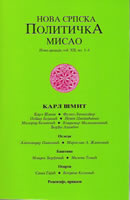
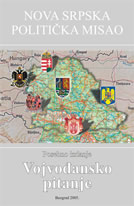
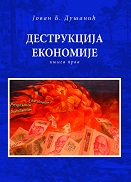
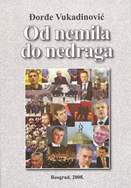
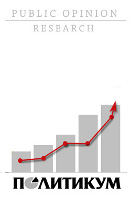



 Readers may recall our comments of several weeks ago about the “Bosnian war crimes atlas” created by the Research and Documentation Center [RDC] in Sarajevo, headed by Mr. Mirsad Tokača.
Readers may recall our comments of several weeks ago about the “Bosnian war crimes atlas” created by the Research and Documentation Center [RDC] in Sarajevo, headed by Mr. Mirsad Tokača.